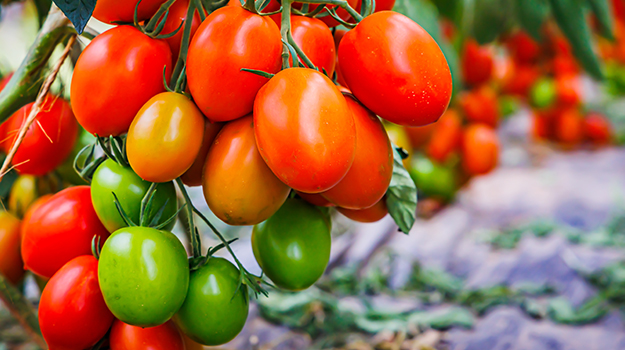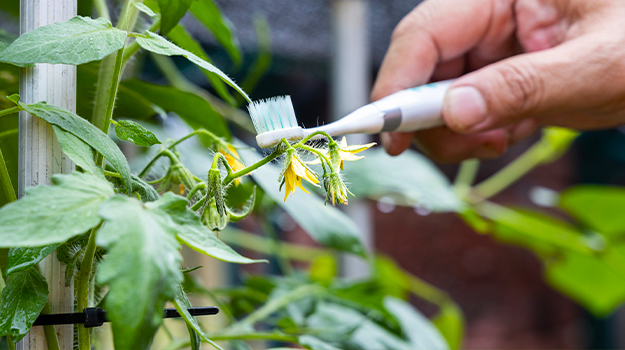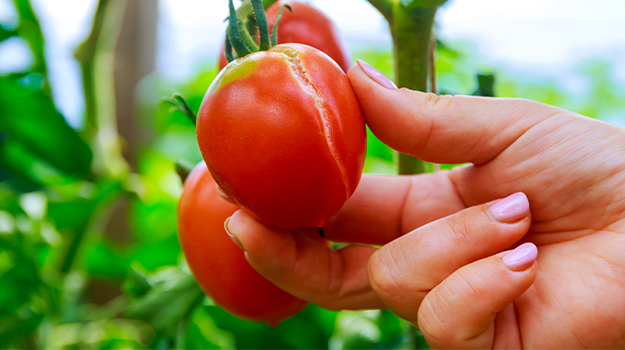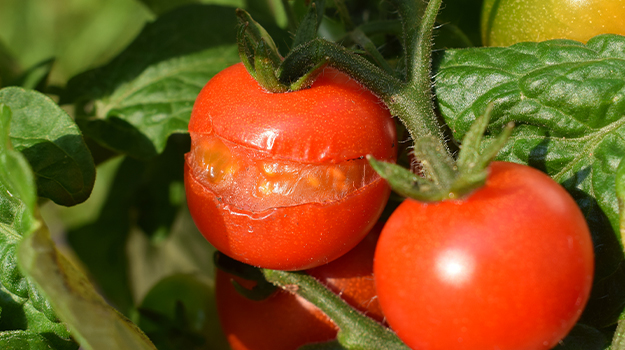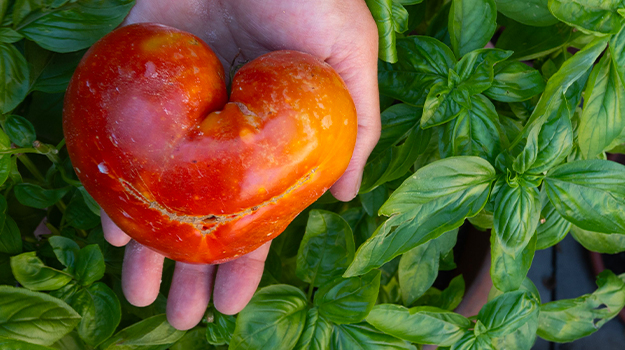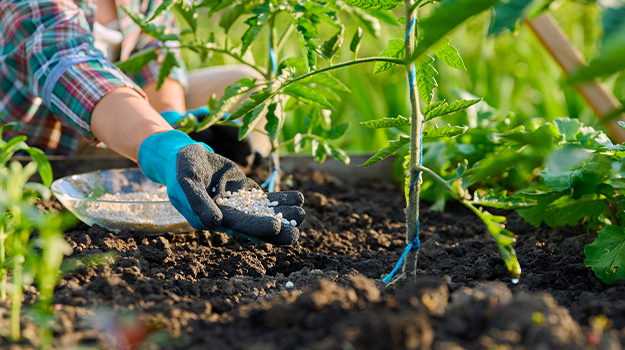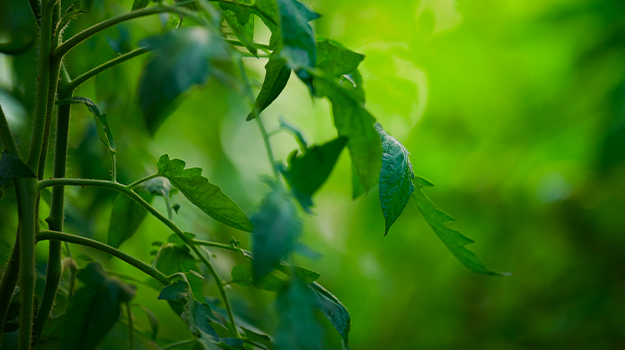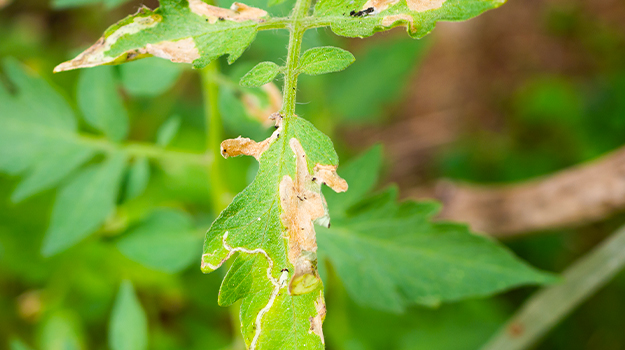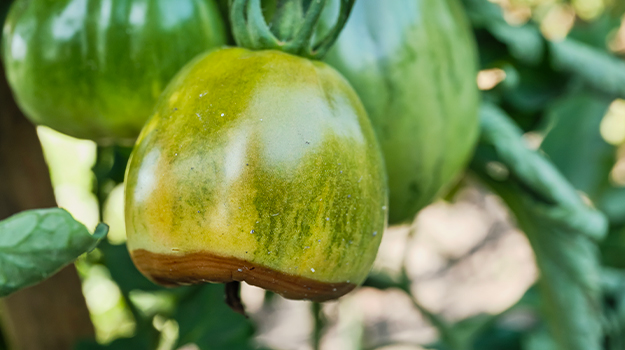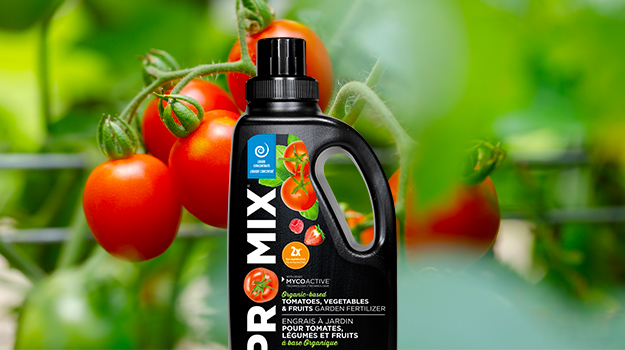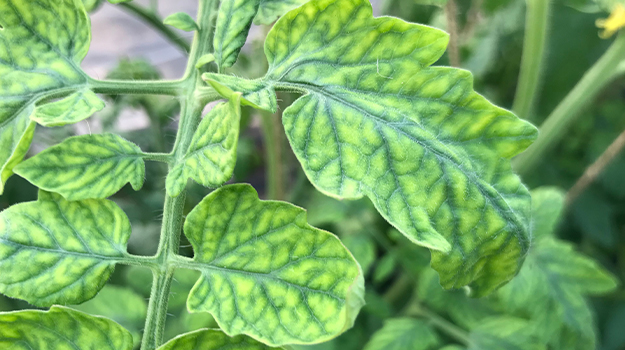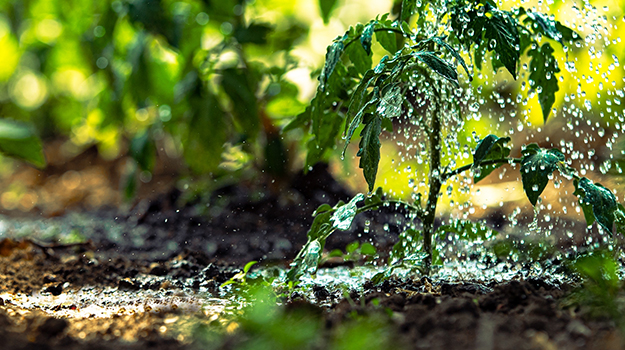- What are the common problems that affect tomatoes?
- What are my tomatoes cracking?
- Why are my tomatoes deformed?
- Why do my tomatoes produce a lot of leaves and little fruit?
- My tomato plants are drooping and wilting
- Why are my tomato leaves spotted?
- What is blossom-end rot?
- What is chlorosis?
Tomatoes are a must-have for every gardener. They can be grown in the ground or in pots, in the backyard or on the balcony. Their great popularity is mainly due to the wonderful versatility of their fruit, because it must be admitted that growing tomatoes is not always without its challenges.
Tomatoes are susceptible to Mother Nature's changing moods, improper watering, insects and diseases. While some problems can't be avoided, others can easily be addressed.
Here are the most common problems as well as solutions to ensure a bountiful harvest.
What are the common problems that affect tomatoes?
Why tomato flowers dry up and fall
Four reasons can explain why flowers dry up and fall without producing fruit.
- Absence of pollination. In rainy weather or when hot weather lasts for a long time, pollinators are less active.
SOLUTION: You can get around this problem by pollinating yourself. When the plants are in bloom, gently shake the flowers to release the pollen. An electric toothbrush is also a good option. Place it behind the flower and turn it on. The vibration is enough to release the pollen and cause it to fall onto the pistil, fertilizing the flower.
- Lack of water. When stressed, a tomato plant will prioritize its leaves (photosynthesis being essential to its survival) to the detriment of its flowers, which will dry up.
SOLUTION: Consistency in watering is one of the keys to success. - Your plant doesn't have access to the nutrients it needs. It will produce flowers, but no fruit.
SOLUTION: Tomatoes are heavy feeders! Fertilize container-grown tomatoes every two weeks, and every 3 to 4 weeks when grown in the ground. Opt for our Organic Garden Fertilizer for Tomatoes, Vegetables & Fruits 4-4-8 or our Organic-based Garden Fertilizer for Tomatoes, Vegetables & Fruits 3-6-12. - Your tomatoes are too hot. Tomatoes love heat, but anything above 35 °C, in the blazing sun, is too much!
SOLUTION: If your tomatoes are grown in pots, move them to partial shade during prolonged heat waves. Place them in full sun again when the weather returns to the seasonal average.
What are my tomatoes cracking?
Tomato cracking can occur before or after harvest and is most often caused by an irregular water supply. The fruit splits as a result of excessive pressure when exposed to significant moisture fluctuations at ground level.
This phenomenon can be difficult to control, especially when Mother Nature has heavy rain or a prolonged drought on the program. Cracking occurs, for example, when we water heavily after a period of drought.
The tomato will absorb a large amount of water and swell quickly, eventually cracking. These can be small cracks in the stalk, but can also be deep cracks over the entire fruit.
How to prevent my tomatoes from cracking?
- Change your watering habits: water regularly and slowly to ensure that the water reaches the roots.
- Don’t let the soil dry out completely and prevent the leaves from wilting. Keep the soil slightly moist at all times.
- Spread mulch around the base of your tomatoes to help retain moisture.
- Plant tomatoes deeper. In spring, bury part of the stem after removing the lower leaves. Your plant will develop more roots and will be less sensitive to drought.
- Harvest tomatoes as soon as they are ripe. Avoid leaving them on the plant unnecessarily!
Can I eat cracked tomatoes?
Since it's not related to a disease, the fruit can be eaten safely and won't have lost any of its flavour. It just won't be as attractive and won't last as long. Eaten as bruschetta, in a salad or in salsa, it won't show!
TIP: It is recommended to harvest cracked tomatoes promptly. Left on the plant, they encourage the development of diseases and attract certain pests.
Which tomatoes are resistant to cracking?
Some varieties are more resistant. Their skin is slightly tougher, which explains why they crack less easily: Fantastic, Pink Girl, Celebrity, Big Beef, Black Cherry, Canabec rouge Sun Gold, Taxi, Cherokee Purple, Mountain Spring, Petitbec, Sweet Treats and Yellow Pear.
PRO TIP: When it's not raining, water regularly and water enough so it reaches the roots. Do it preferably in the morning and avoid wetting the foliage (a soaker hose is a good option!). Avoid letting the soil dry out completely or letting the leaves wilt.
Why are my tomatoes deformed?
This phenomenon, more common in large-sized tomatoes, is called "catfacing," although the resemblance with a cat face is questionable. The fruit has developed abnormally from a physiological point of view. It may present depressions, scars and swellings, generally on the part opposite the stalk.
The possible causes of catfacing
- Abnormally hot or cold temperatures (above 30 °C or below 10 °C) that interfere with normal pollination
- Irregular watering
- Excessive fertilization with nitrogen fertilizer (whose first number is high compared to the others)
- The use of certain lawn herbicides or an antifungal product nearby
How to avoid growing deformed tomatoes
You can limit the number of heirloom Oxheart tomato plants you plant or plant them later, once the soil and air have warmed up.
Mulching the soil can also help reduce the stress caused by temperature fluctuations on tomato roots. This precaution also helps keep the soil moist, which is another factor in your favour, as irregular and shallow watering can also contribute to causing deformations in tomatoes.
Use one of our fertilizers formulated for growing tomatoes, avoid using insecticides that are potentially harmful to bees, and plant flowers that attract pollinators.
Read our article to learn how your veggie garden can benefit from the presence of pollinators.
How to tell if a tomato is edible?
Catfaced fruits are just as tasty, but the hardened tissue must be removed before eating. However, insects and diseases can invade fruits whose deformations have created openings.
It's recommended not to leave tomatoes on the plant for too long. Pick them as soon as they're ripe, or even earlier if you notice any openings. By ripening them indoors, they'll be less likely to be attacked.
Why do my tomatoes produce a lot of leaves and little fruit?
Are your plants lush and green, but showing few flowers and even fewer fruits? It's possible they're simply a late-ripening variety. Check the label and do some research.
Another possible reason is once again the use of an inadequate fertilizer. A high proportion of nitrogen (the first number in N-P-K) encourages foliage formation at the expense of flowers and fruit. Instead, opt for our Organic Garden Fertilizer for Tomatoes, Vegetables & Fruits 4-4-8 or our Organic-based Garden Fertilizer for Tomatoes, Vegetables & Fruits 3-6-12.
If you used an adequate fertilizer, your plant may have been overfertilized. Stop adding fertilizer until fruit appears. And water regularly!
My tomato plants are drooping and wilting
If your plants are looking droopy, a lack of water is likely the problem. Water deeply and regularly. Keep the soil from drying out completely and use mulch to help keep the plants cool.
Also, make sure your plants are getting the light they need. Tomatoes also need at least 8 hours of direct sunlight each day.
Why are my tomato leaves spotted?
This is usually a sign that your plant is sick. Most of the time, the leaves closest to the ground are the first to be affected. Remove them. You can remove up to a third of the leaves from a tomato plant without harming it.
Many diseases can be prevented by not wetting the leaves when watering, covering the soil with mulch and not planting tomatoes in the same spot two years in a row.
Infected tomatoes that have spots should not be eaten.
What is blossom-end rot?
Blossom-end rot is characterized by pale spots that gradually turn brown or black on the lower part of the fruit. This disease, common in tomatoes, is caused by calcium deficiency, excess nitrogen or poor soil.
Note that calcium is rarely deficient in the soil. The problem most often stems from irregular watering: your plant must get the essential nutrients it needs when required. In fact, the problem is more common with container-grown tomatoes, whose soil dries out quickly.
How to control blossom-end rot?
Start by ensuring deep and regular watering to make sure calcium and other nutrients are properly delivered to the roots. Prevent the soil from drying out and avoid heavy watering following a dry spell. Again, consistency is your best bet.
You can also…
- Correct a calcium deficiency by adding lime, bone meal or other calcium-rich amendments.
- Plant in soil with a pH between 6 and 7, which facilitates the uptake of calcium by the plant.
- Avoid working the soil at the base of the plant to prevent damage to the roots.
- Avoid fertilizers with a high nitrogen concentration which also affect proper calcium uptake.
- Feed your plants while enriching the soil with a fertilizer that is rich in organic matter and potash. Our Organic-based Garden Fertilizer for Tomatoes, Vegetables & Fruits 9-16-16 contains calcium as well as all the nutrients tomatoes need.
It's often the first fruits that are affected. By following our recommendations, a good harvest is still possible!
Also read: Our best tips to successfully grow tomatoes
Are tomatoes with blossom-end rot edible?
Tomatoes with blossom-end rot can be eaten after removing the diseased part. The rest of the fruit remains perfectly edible. However, if the necrosis is severe or if a fruit is affected by secondary infections, it is best not to eat it.
Italian tomatoes, such as the Roma variety, and peppers are most affected by blossom-end rot. The Fantastic and Big Boy cultivars also require vigilance.
Also read: Common tomato diseases
What is chlorosis?
Chlorosis is a manifestation of an imbalance in the plant's metabolism due to a nutritional deficiency. It most often occurs in calcareous, compact soils with a deficiency in iron or manganese.
How to identify chlorosis?
Anytime a plant's leaves change colour, there's reason to investigate. This could be due to a fungus or insect infestation, poor growing conditions (poor lighting, poor watering), inadequate soil or a nutritional deficiency.
In the case of chlorosis, the leaves turn pale and then yellow, taking on a yellowish-white hue by the end of summer. Only the veins retain their colour. The gradual disappearance of chlorophyll explains this phenomenon.
To avoid this, however, you must act well in advance. Start by planting in rich, well-balanced soil.
How to prevent chlorosis
- Use a rich and balanced soil mix at planting, such as our Organic Vegetable and Herb Mix
- Correct any iron or manganese deficiency with an Organic-Based Garden Fertilizer for Tomatoes, Vegetables and fruits 9-16-16
- Analyze your soil to identify its deficiencies
- Amend and work compacted, calcareous soil
- Promote good drainage to keep water from stagnating
PRO TIP: Calcareous, wet soil or soil watered with calcareous water affects the trace elements that promote chlorophyll assimilation. Weakened plants then become more prone to disease and pest attacks.

